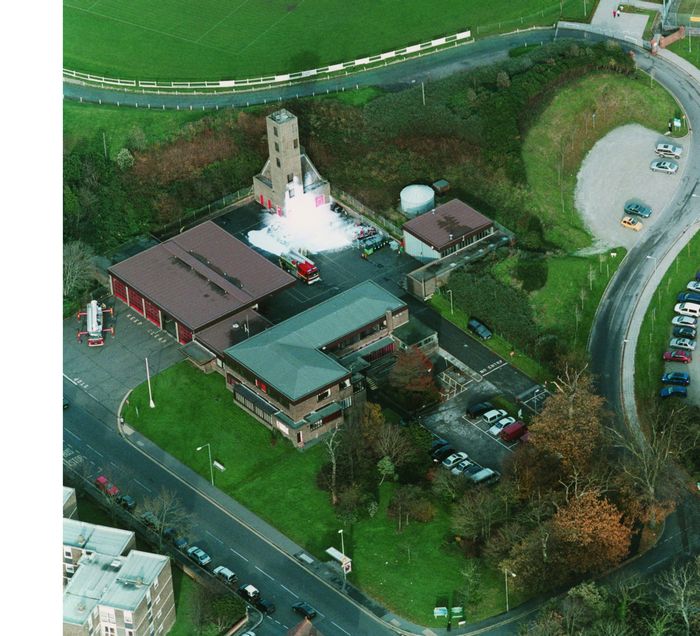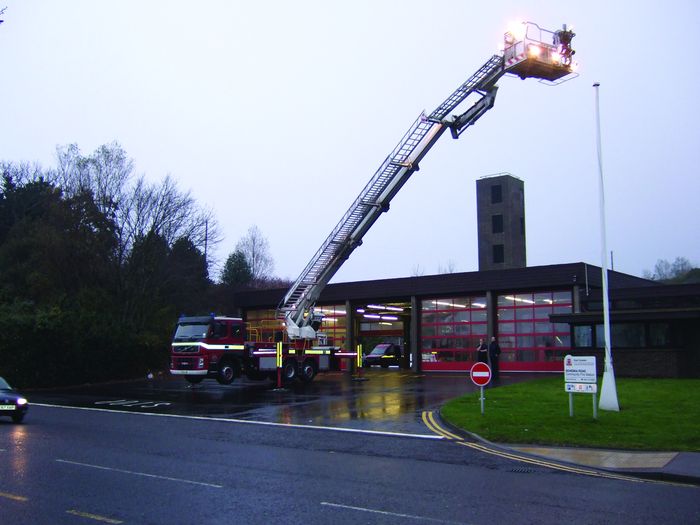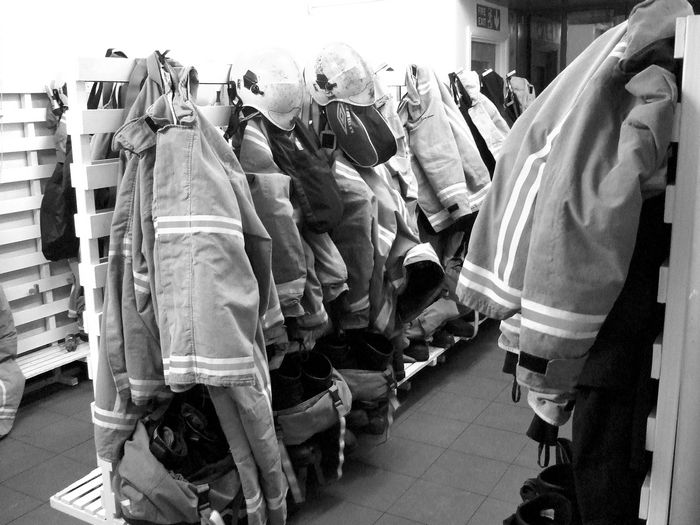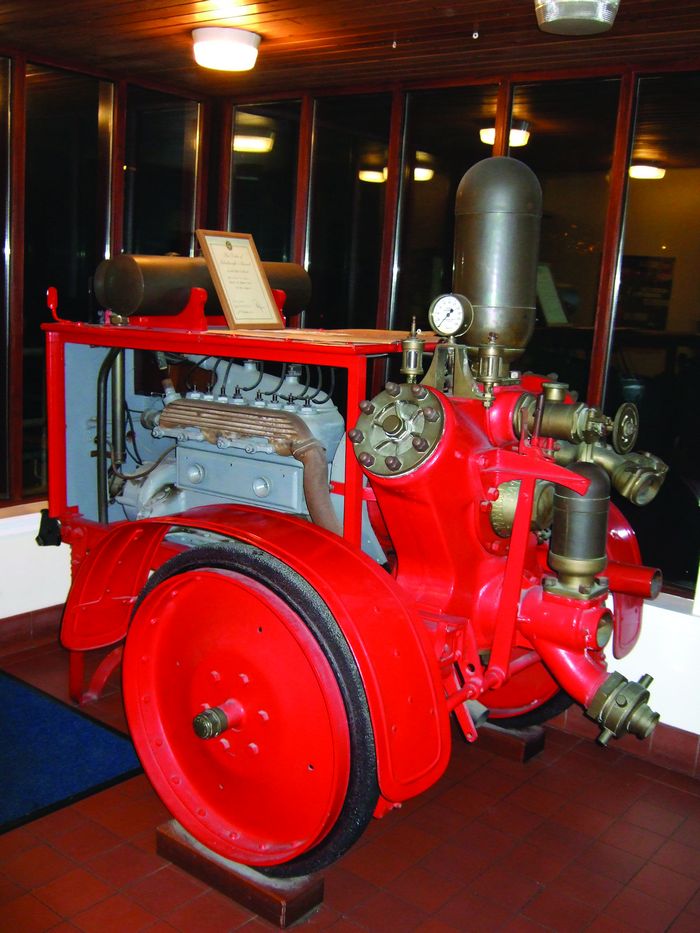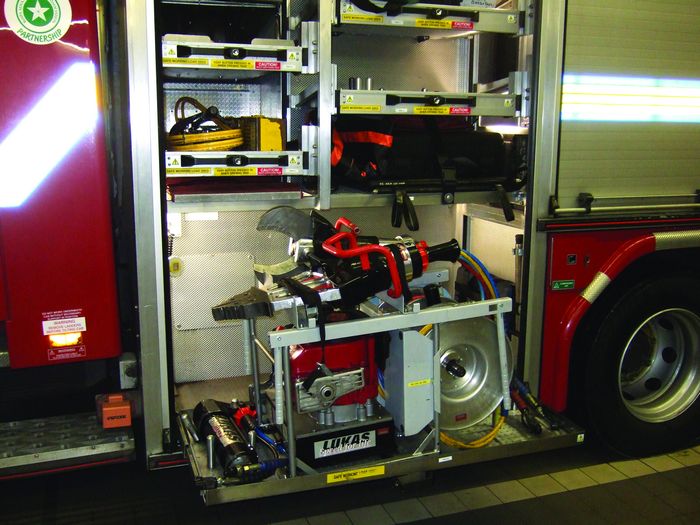Bohemias forty fit firemen climb the ALPs
Bohemia Fire Station recently invited the Voice for a look behind the scenes. Already full of admiration for the courage and dedication of fire-fighters, we were impressed by the efficiency of operations, the amazing variety of equipment, and the thoroughness of training. Mark Webb, station commander, revealed impressive facts and figures.
In fulfilling its vital public service, Bohemia fire station answered 1354 calls in the year 2006/7, providing rapid response to a wide range of incidents in the Hastings area. The total figure comprises 371 fires of all types (houses, offices, cars, bins, etc), 383 non-fire incidents (special services), and 600 false alarms. The overall figure for East Sussex Fire and Rescue Service in 2006/7 was 13,984 calls.
HORSES
Non-fire incidents include road traffic collisions, flooding, animal rescue, people locked in or out of their homes and chemical spillages. An unusual incident a few days before our visit saw the firemen rescuing a cygnet trapped in a tree in Alexandra Park. Large animals in particular, for example horses and cows, can get into trouble, sometimes getting stuck in muddy ponds or swampy rivers. People too, sometimes get stuck in strange places, needing fire-fighters to free them!
There are almost as many false alarms as fires, due mostly to alarm systems not being maintained properly, which drag fire-fighters away from their core rôle.
Bohemia Fire Station, which has been at its present site near the Law Courts since 1971, covers the west of the town to Glyne Gap and north to approximately half-way between Westfield and Broad Oak. The Ridge fire station covers the east side of town. Often crews from both stations work together at an incident.
DUMMIES
The Fire Station is crewed twenty-four hours a day, seven days a week. There are forty fire-fighters, all full-time, in four watches of ten. They are all very highly trained and constantly practice to keep their skills in tip-top condition. A training area is laid out as a typical maisonette, complete with doors, furniture, and life-size dummies. The premises can be filled with smoke so fire-fighters can perfect their search and rescue techniques. There is also a network of crawlways in tunnels to practice confined space rescues, and training in breathing apparatus. The prolonged physical activity necessary in incidents means firemen need a good mixture of endurance and strength, and the well-equipped gym includes cardio-vascular equipment and a range of weights. The crews are allocated time in each shift for fitness training.
EYE OPENER
To see the amount and variety of equipment stashed away on a fire-engine is an eye-opener. There are four to six firemen on a fire engine, (officer-in-charge, driver and two to four crew). In the cab are breathing apparatus sets for each crew member. Packed along the sides and back of the vehicle is an impressive array [pictured] of tackle to deal with every conceivable incident. For road traffic collisions there are giant cutters for hacking through metal and “spreaders” to widen an area to free trapped limbs. There are rubber mats an inch thick which can be slipped under a vehicle and inflated to eighteen inches, lifting it off trapped victims. There is equipment to stabilize vehicles whilst the injured are still inside and rams to push vehicles aside to reach people.
There are various other tools for cutting and breaking-in, a thermal image camera to search for people through thick smoke, an oxygen pack for resuscitation, and a first aid kit.
In the centre of the fire-engine is a tank carrying 600 litres of water. If necessary, more can be obtained from the mains at street hydrants, from another fire engine, or a big suction hose can take it from an open water supply such as a swimming pool or the sea. A powerful pump at the back of the vehicle can squirt compressed-air foam through a large hose from the foam locker, water through standard hoses for interior fires, and water through wide-bore hoses for external fires and massive fires. The eight big delivery hoses can be joined together to make 200 metres in all. A selection of ladders is stored on top of the fire engine, the longest capable of reaching third floor level. There is a roof ladder, ropes, belaying equipment, and equipment for extinguishing chimney fires.
ALPS
Also carried are protective rubber suits completely covering firemen and their equipment when dealing with chemical incidents, one-piece “polar suits” for warmth and dry-suits for water rescues. There is an engine-driven fan to push smoke out of buildings, and a large selection of lights, as often a burning building will be without electricity. There is further special equipment at other fire stations that can be asked for if needed.
For fires above third floor level, the ALP or Ariel Ladder Platform [picture] is necessary. Costing £ 400,000, it has been at Bohemia for three years. There are only three in East Sussex, the others being at Eastbourne and Brighton. Between them they cover the whole county, and sometimes two or three will attend an incident.
The ALP’s prime function is to rescue people from heights. The arm can reach a height of 30 metres or horizontally to 19 metres. At its end is a cage capable of carrying three people, and a rescue ladder runs alongside, enabling many more to descend to safety. A rope can be attached to the underside of the cage to rescue people from wells, shafts, or the base of cliffs.
The cage also has nozzles enabling water to be squirted down from a height, a fixing for a camera so it can be used as a remote TV screen, including infra-red pictures, and a battery of lights to floodlight an area, especially valuable at major road incidents. The ALP can also be used as a crane.
Providing valuable back-up to the firemen is the Fire Victim Support Unit, manned by Red Cross Volunteers. Based at the fire station, it will go out to any incident, especially if the occupants can’t get back in to the building, and provide them with a warm place in which to sit, and a cup of tea.
ALARMS
There is much emphasis on fire prevention. Fire Service personnel are keen to carry out home safety visits, discussing fire safety issues specific to individual properties and homeowners, and fitting smoke alarms where necessary. Also at Bohemia Road Fire Station is a Fire Safety Department responsible for ensuring commercial premises comply with fire safety law.
East Sussex Fire and Rescue Service has an Education Department based at Eastbourne and visits schools to talk on fire safety. Bohemia fire station also hosts “Life Courses” for 10-16 year-olds at risk of offending, to instil core values of discipline, self-motivation and confidence. Station commander Mark Webb summed up the Fire and Rescue Service’s mission as “having three-prongs: education, to stop fires happening in the first place; protection, i.e. checking that buildings meet legal requirements; and response to incidents, the hazardous part of the job.”
For a free fire safety visit to your home call 0800 177 7069 or email enquiries@esfrs.org
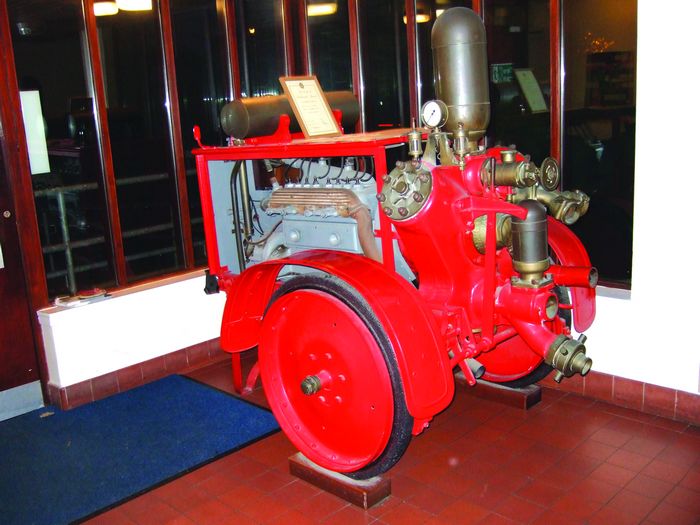
The old - in the Fire Station museum a well preseerved pump - a Merryweather Hatfield Trailer Pump from 1925
Leave a Response
You must be logged in to post a comment.

